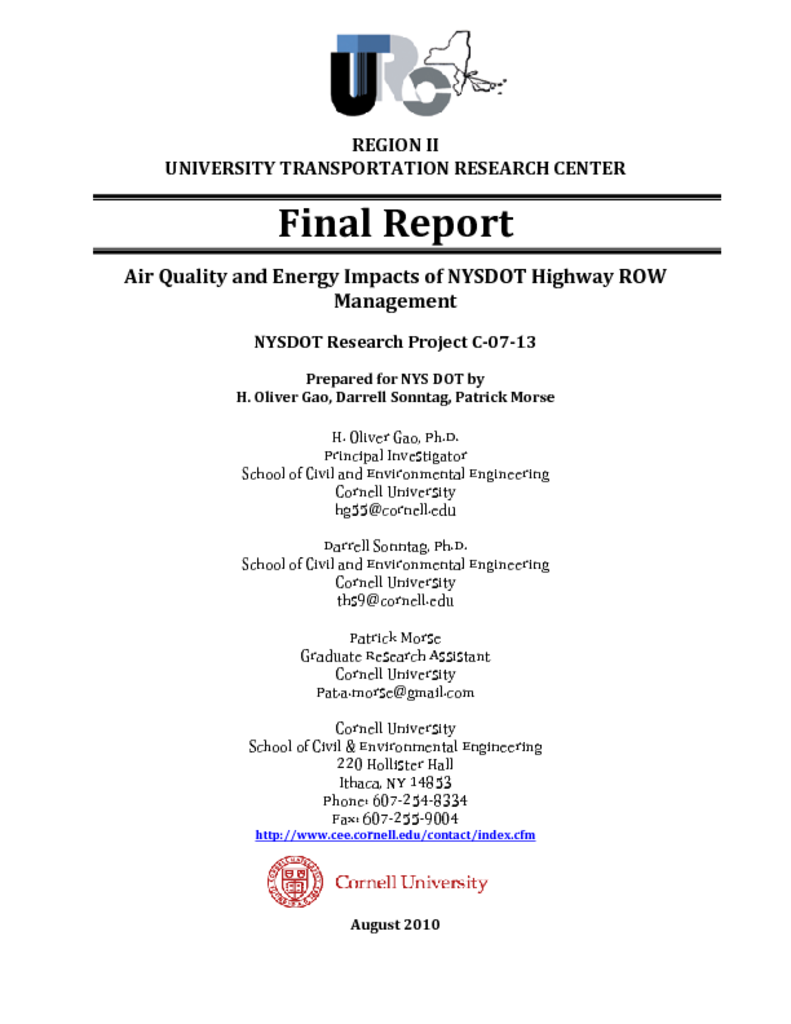Mowing the highway right-of-way is important for the safety of roadway users and maintaining
the highway infrastructure. However, little quantitative data are available on the energy use and air quality
impacts of highway mowing activities. In this report, fuel usage and exhaust emission rates are reported from
a study that monitored tractors operating in real-world conditions by the New York State Department of
Transportation. The emissions and fuel consumption from the mowing practices of twelve tractors were
compared based on miles-mowed per hour and acres-mowed per hour. The distance-based comparison
revealed that there was substantial variability in emissions and fuel rates due to the technology of each
tractor. Due to the high fuel rates of the relatively newer (2004) and larger tractors, the absolute emissions
levels from these tractors were comparable to the older 1980?s era tractors. In the area-based comparison, the
operating conditions and mower type were the dominant variables determining the emission and energy
rates. The sickle bar, flail and rotary equipped mowers had comparable fuel consumption and emission rates.
Mowing over the guiderails, which use a large tractor and a small cutting head, had fuel consumption and
emission rates 2 to 4 times higher than the other mowing activities. Highway mowing activities are an
important source of air-borne pollutants and this study showed that mowing the median or highway roadside
can be equivalent to 20-60 passes of a 1990?s era heavy-duty diesel truck for CO2 and NOx emissions, and
50-60 passes for PM emissions.
Publication Category




